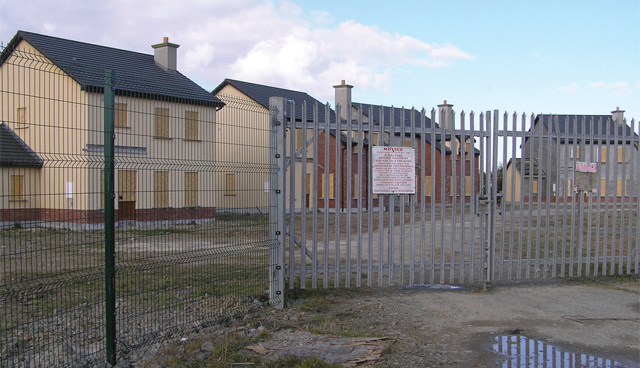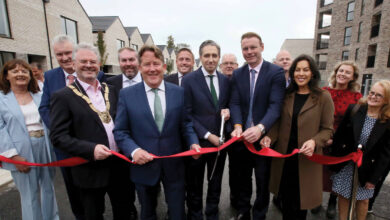Vacant site levy implementation

A report in the vacant site levy in Ireland has found that less than a third of money due was paid by property owners by the beginning of 2020.
The report, published by the Oireachtas’ Parliamentary Budget Office (PBO) in May 2020, reported that €2.3 million was due at the end of 2019 under the levy, with only €882,000 having been collected. Only one in eight councils were found to be collecting the payments for vacant sites.
Four of the State’s 31 local authorities were found to have made any collections of the levy in 2019, these were: Dublin City, Kilkenny, Waterford and Wicklow. More than a quarter of councils were found to have not even had an active register for vacant sites.
Problems were also highlighted with the administration of the levy, with confusion over what constitutes a vacant site to the fore. “Local authorities have highlighted a difficulty in identifying a vacant site, and the point at which a site is no longer vacant,” the report states. “Specifically, the 2018 report indicate that some local authorities were not satisfied that the definition of a vacant site was clear enough to allow for sites to be added to the register. The definition of ‘vacant and idle’ was clarified through an amendment in the Planning and Development (Amendment) Act 2018, however the 2019 progress reports indicate that there is continued confusion in determining vacancy.”
Owners of land listed on the vacant site registers maintained by local authorities were liable to pay 3 per cent of its market value as a levy 12 months in arrears on 1 January 2018, a figure which rose to 7 per cent in 2019, to be collected in 2020.
The report notes that determining ownership and liability has been an issue in the administration of the levy. “Local authorities have highlighted problems identifying the ownership of vacant sites, and there are ongoing issues concerning the procedure when sites on the register are sold, resulting in a transfer of ownership,” it states. “At least one local authority that collected payments under the levy sought clarification from the Department, as it believes that the correct interpretation of the 2015 Act prevents them from using the collected revenue. There have been concerns expressed that revenue collected under the levy may need to be refunded as a result of a change in the ownership of the land.”
The report notes that the timeframes set out in legislation are intended to allow site owners the time to sell the site or initiate development, but warns that “the application of a zero rate for the previous year once there is a change in ownership may ultimately undermine the incentive to develop land”.
A total of 304 vacant sites were registered in 2018, a figure that increased to 353 in 2019. Local authorities estimate a total of 18,000 potential housing units to be developed on these sites if the levy were to be successfully implemented, a figure that would only increase if the maintenance of such registers were uniform across all local authorities. Eight of the State’s local authorities had no active registers of vacant sites by the end of 2019: Cavan, Galway County, Kerry, Leitrim, Louth, Mayo, Monaghan and Offaly. The report states that lack of housing needs had been cited as an explanation for the lack of an active register in some areas, despite the fact that data from the Housing Agency reporting that all council areas had waiting lists for social housing in 2019.
Effectiveness has also been an issue with “ongoing concern that the increased 7 per cent rate is not substantial enough to deter land hoarding”. This is especially relevant due to the rate of house price inflation, which the report notes has exceeded the 7 per cent charge by averaging 8.5 per cent on an annual basis since the introduction of the levy in 2015. The report also notes that local authorities have reported issues when including sites on their registers where the claim of neglect or vacancy is under challenge. Where the Valuation Tribunal is asked to determine the outcome of an appeal regarding an assigned market valuation, “uncertainty” reigns over the timeframe allowed for the appeal to be processed.
Local authorities have also reported that it is difficult to determine if sites are having adverse effects on existing amenities, as they are required to do, which then prevents them from adding the sites to the register. Concluding its report, the PBO says that “measures designed to return vacant sites to beneficial use could well assist in addressing issues of housing supply, but there is evidence of ongoing challenges in the implementation and administration of the vacant site levy”.
To address this, the PBO recommends a more centralised approach in order to minimise the regional variance currently obvious in the data. This centralised approach “might include” four measures: the development of a central process to administer and manage registers; collecting, collating and publishing key statistic at an aggregate level; provision of resources to support the administration of the levy; and provisional guidance to local authorities to aid them in their interpretation of legislation. An annual report collating the information provided by local authorities is also recommended in order to “enhance transparency and assist the administrative burden” placed on local authorities.





